Last Updated on October 31, 2024 by Ellen
Different religions, customs, food, drink – different everything can be found in this cultural crossroad in Marrakesh. If you’ve never been to this Moroccan city, this is what it’s like, and it will help prepare you for the explosion of colors, smells, customs, and more.
Calls to prayer for Muslims five times a day; women with head wraps that hide their hair and sometimes their faces; stews and sweets; tea and hardly any alcohol sold in corner stores. And these differences from my home in the U.S. don’t begin to cover it.
The old section of the city is vibrant with merchants: tanneries and scarves, pottery and rugs, lights and spices, cafes and restaurants. The people are just as varied as the goods in the markets. There are Scandinavian traits among some locals with lighter skin and eyes, Arab features, European features, people of Sub-Saharan descent.
The newer neighborhoods look more westernized with a few fast-food and coffee brands.
Both parts of Marrakesh — the old section and the new section — are primarily influenced by Islam.
Religion
The religion here is 98 percent Islam. This means the cultural customs are influenced by Islam. For example, during calls to prayer five times a day, the announcements to gather are made over loudspeakers on mosques. If you are standing within earshot of speakers of more than one mosque, it creates a wild kind of echo song that sounds a bit haunting – especially if you don’t speak Arabic.
Despite the prevalence of Islam, Muslim Moroccan people are tolerant of other religions. For example, take the Marrakesh Declaration in 2016. It’s a statement made by Muslim scholars to defend religious minorities, such as Jews and Christians. The declaration was made by more than 200 Muslim religious leaders to promote equality and protect religious freedom.
In addition to calls to prayer in mosques, another example of religious influence in culture is the clothes people wear.
Clothing
Many women wear the traditional head coverings, such as hijabs or burqas. Some people believe Islamism demands women cover their hair. Other people believe there is no such demand. In Marrkesh, you see – women in head coverings and women without head coverings, both inside and outside the medina, or old walled city.
Outside the medina, more women wear Western-style clothing, and there are even shops with little black dresses for nightclubbing. Yes, there is a night life outside the walls to the old city. That said, during the day, it is rare to see miniskirts and tank tops on local women anywhere in the city – in the new and old sections.
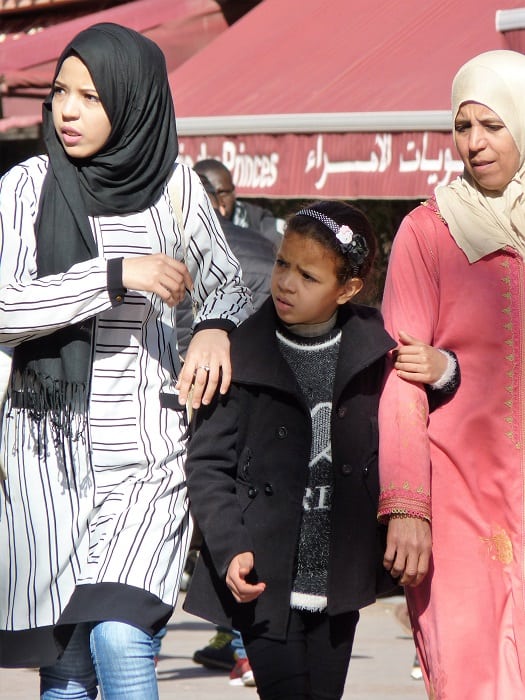
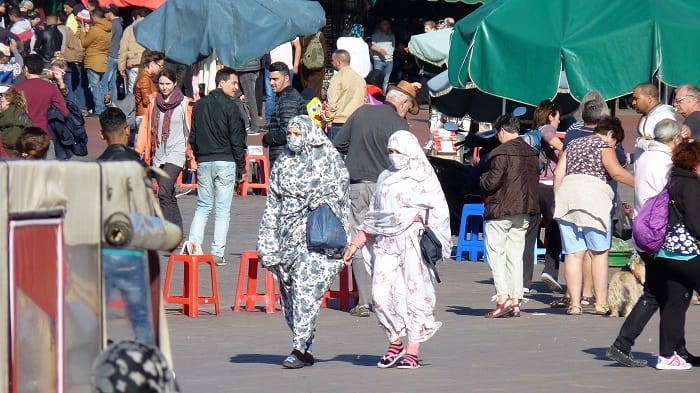
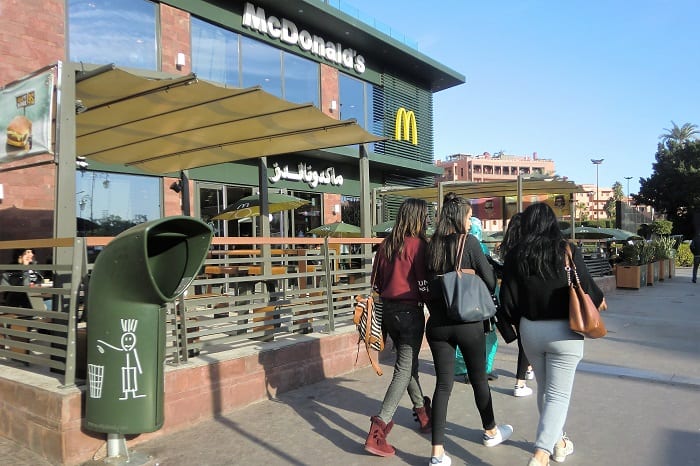
Men wear clothes that cover all skin as well. Many younger men wear jeans and sweatshirts. Our visit was in January, when it’s actually chilly in this part of Northern Africa. Men of all ages wear long robes as coats. Some have pointy hoods. Women also wear long robes, but without pointy hoods.
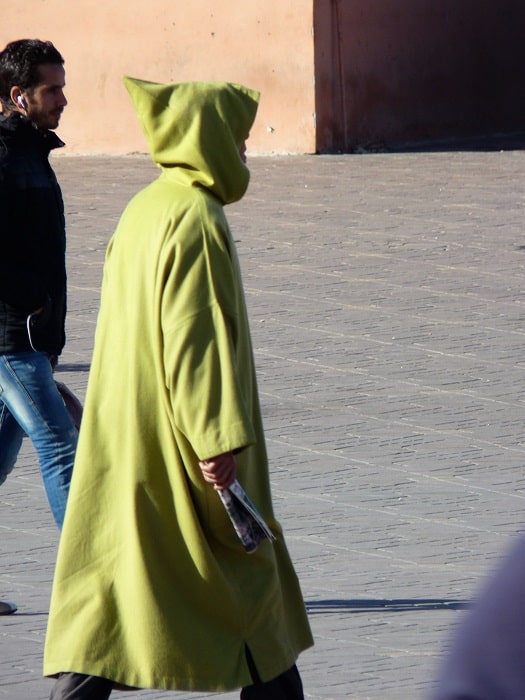
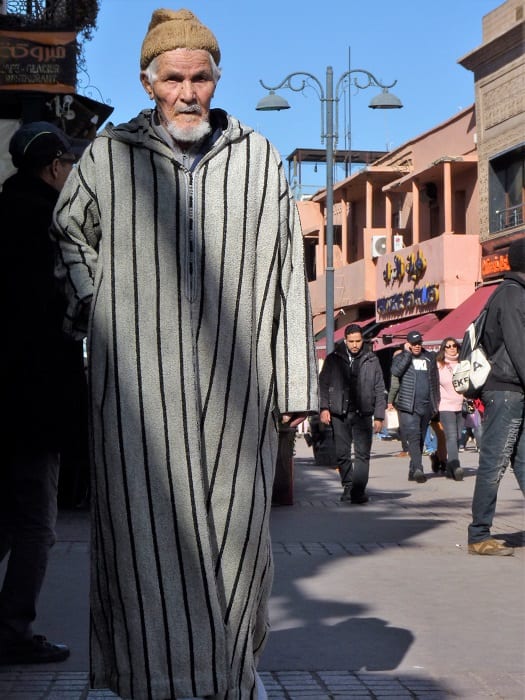
Food
Interestingly, just about every restaurant has a vegetarian section on their menus. Couscous is fabulous here. Couscous is a staple of food all over Northern Africa. I’ve had the best falafel of my life in this cultural crossroad in Marrakesh. Pick a place – any place – and these restaurants all know how to make falafel.
I’ve also had tajine, which is a stew. Vegetarian tajines are just veggies – they are soft and spiced. Moroccan soups are tasty on a chilly January evening. It often comes as a tomato-base with a few noodles, chick peas, veggies.
Some of the food has a Mediterranean influence. At one Moroccan restaurant I ordered what was essentially a caprese salad: mozzarella, tomato, basil with olive oil, served a bed of lettuce. Another restaurant served it with crusty bread and a bowl of spiced olives.
It’s easy to find westernized fare in most tourist areas like pizza, burgers, tacos, and more. It won’t be exactly like you’re used to at home, of course, but that’s ok by me.
Drink
Fresh squeezed orange juice is everywhere. You can a glass for just four dirham, or 43 cents, in the medina in a large open area called Jamaa el Fna. The locals simply call it, “The Square.” Also, orange trees grow everywhere in Marrakesh outside the old section. They are all over town on sidewalks. Even in January, the orange trees have plenty of fruit.
Moroccan mint tea also is everywhere. This is what the locals drink (aside from juice). Afternoons in cafes are packed with people having tea, and sometimes coffee. Happy hour features sweet mint tea – with no alcohol in sight, unless you are in an restaurant or hotel that caters to tourists. Many Muslims stay away from intoxicants, like alcohol.
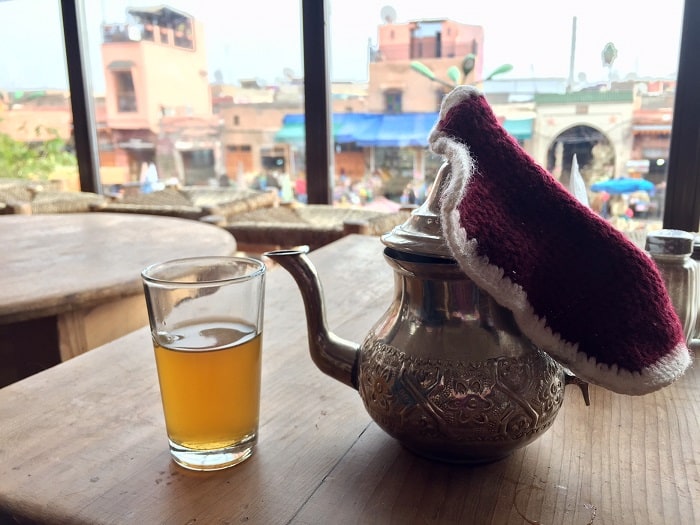
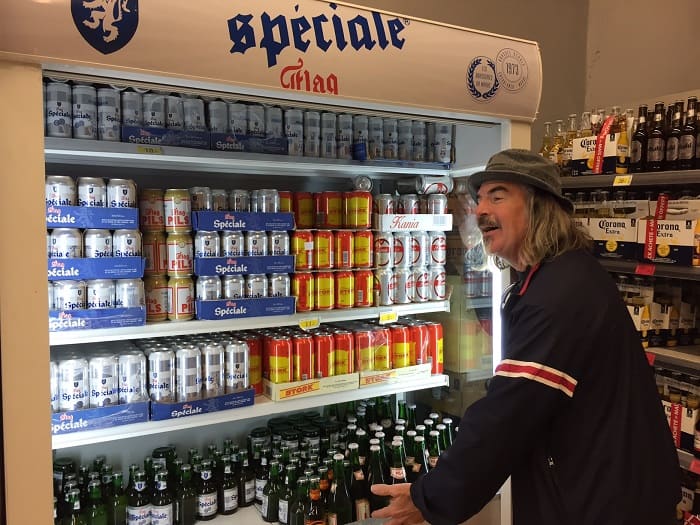
Although alcohol is not found in corner stores or convenience stores, we did find an alcohol section in supermarket under the mall at Marrakesh Plaza outside the old city. After going without beer for one week, Tedly broke down and bought three small cans. We made our way back to our rented room called a riad, where he promptly drank them.
Our accommodations
We stayed in a small, modern riad. It’s basically like a hotel, with a center courtyard and common areas with a couch and an outside seating area on the roof. The kitchen is on the ground floor. Our rental came with breakfast each day, but we did not have access to a kitchen. This is unusual for us – because we usually rent an apartment so we can make our own meals.
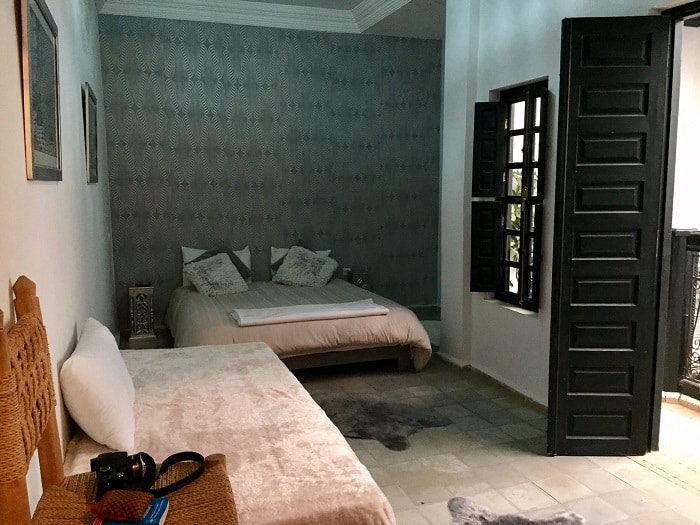
But Morocco is a different kind of place than we are used to. Breakfast included each day, and we generally have one sit-down meal in the evening and snack as needed as we wander around the city. Food can be pretty cheap here. You can feed yourself well, for well under $5 if you pick a cheaper establishment.
We enjoyed mint tea in cafes as we watched the world go by, and it certainly is quite a different world.
It all comes together at the square in the old city
The medina (old walled city) and Jamaa el Fna (the square) are amazing to experience and explore. You can find anything in the souks, or markets, and you can easily get lost in the maze of streets.
The scooters that race by pedestrians in the souks (markets) keep me on my toes, that’s for sure. The snake charmers playing a kind of clarinet and the men with monkeys on the square are interesting to watch because they draw tourists in for photos and donations.
Music with drums makes the square come alive each day and night. Vendors seem to always be open for business. Eatery stands will try to woo you onto their benches. Women will try to paint ladies’ hands with henna. At night, people play games and groups watch dancing or street acrobats. At night the music is a little different. It’s somewhat softer.
Morning or night, the square and the markets in the old city are full of life – they’re always moving.
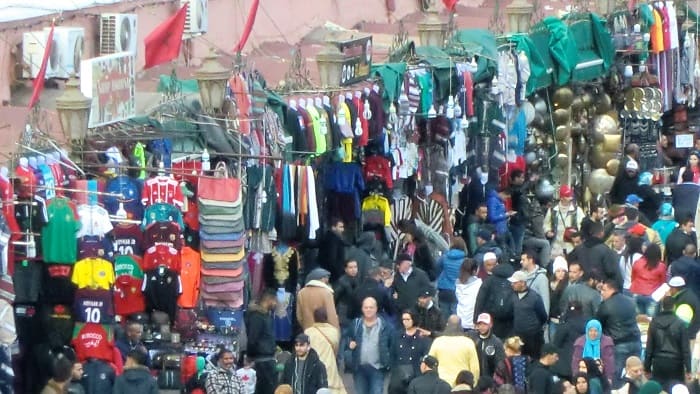
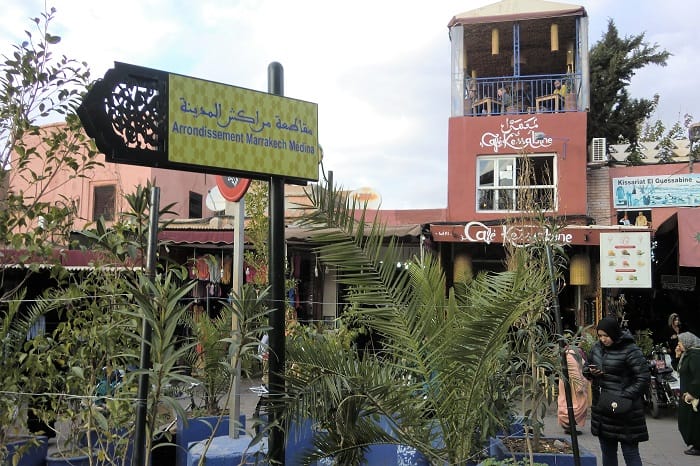
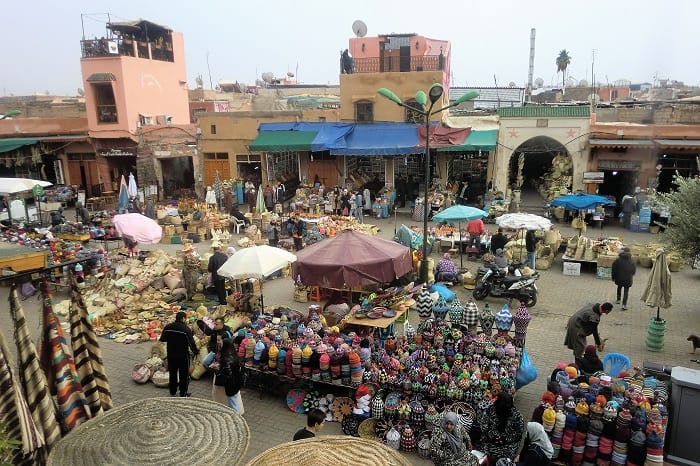
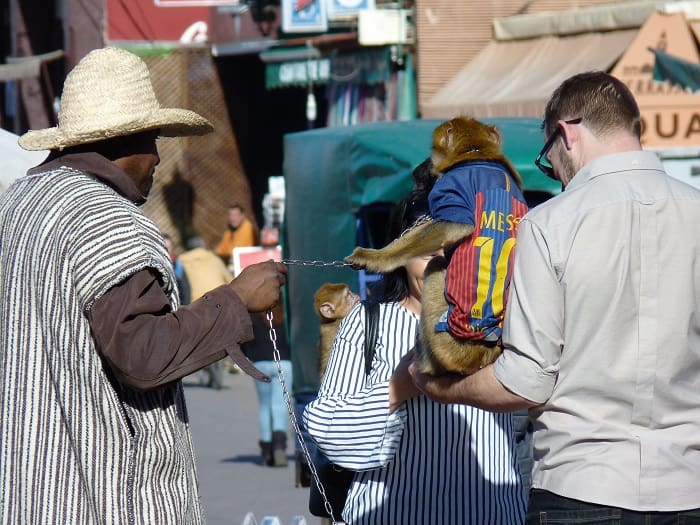
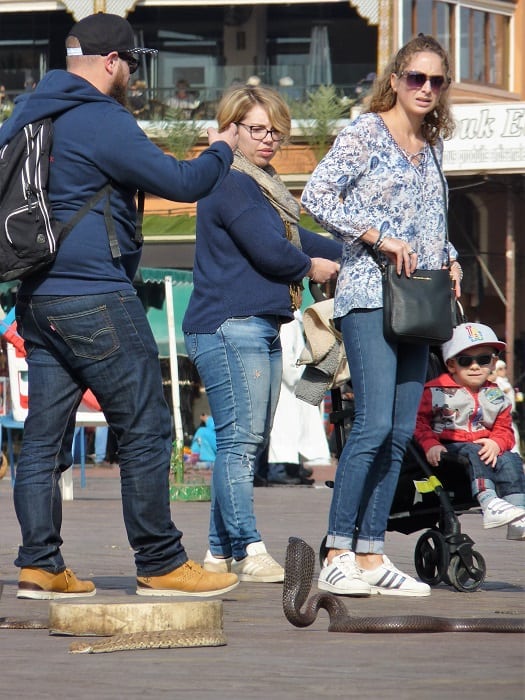
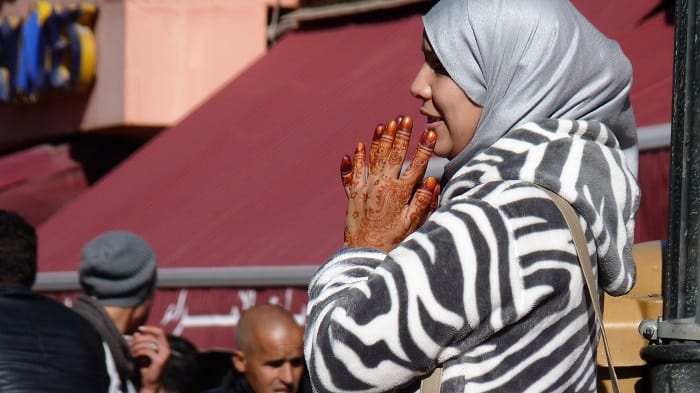
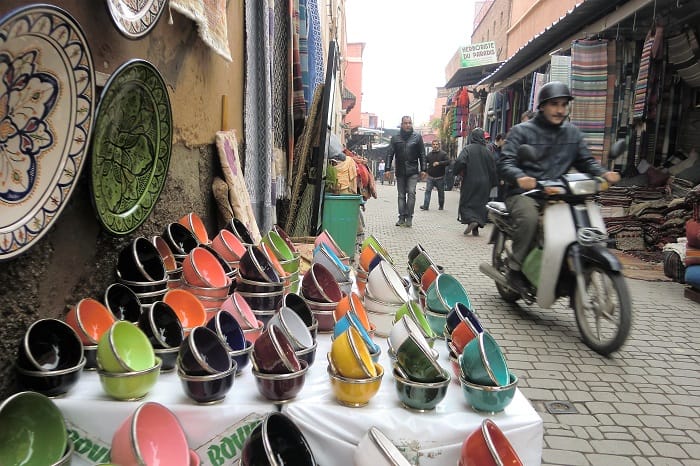
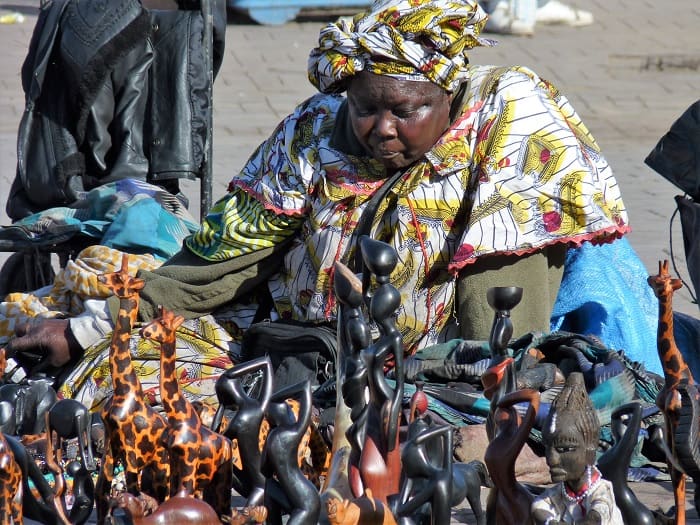
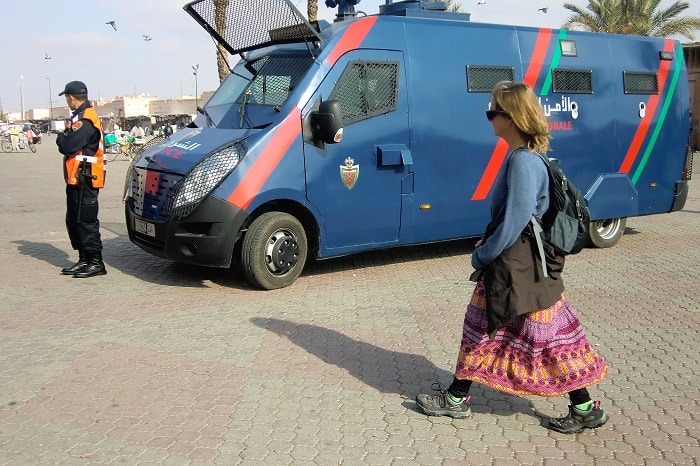
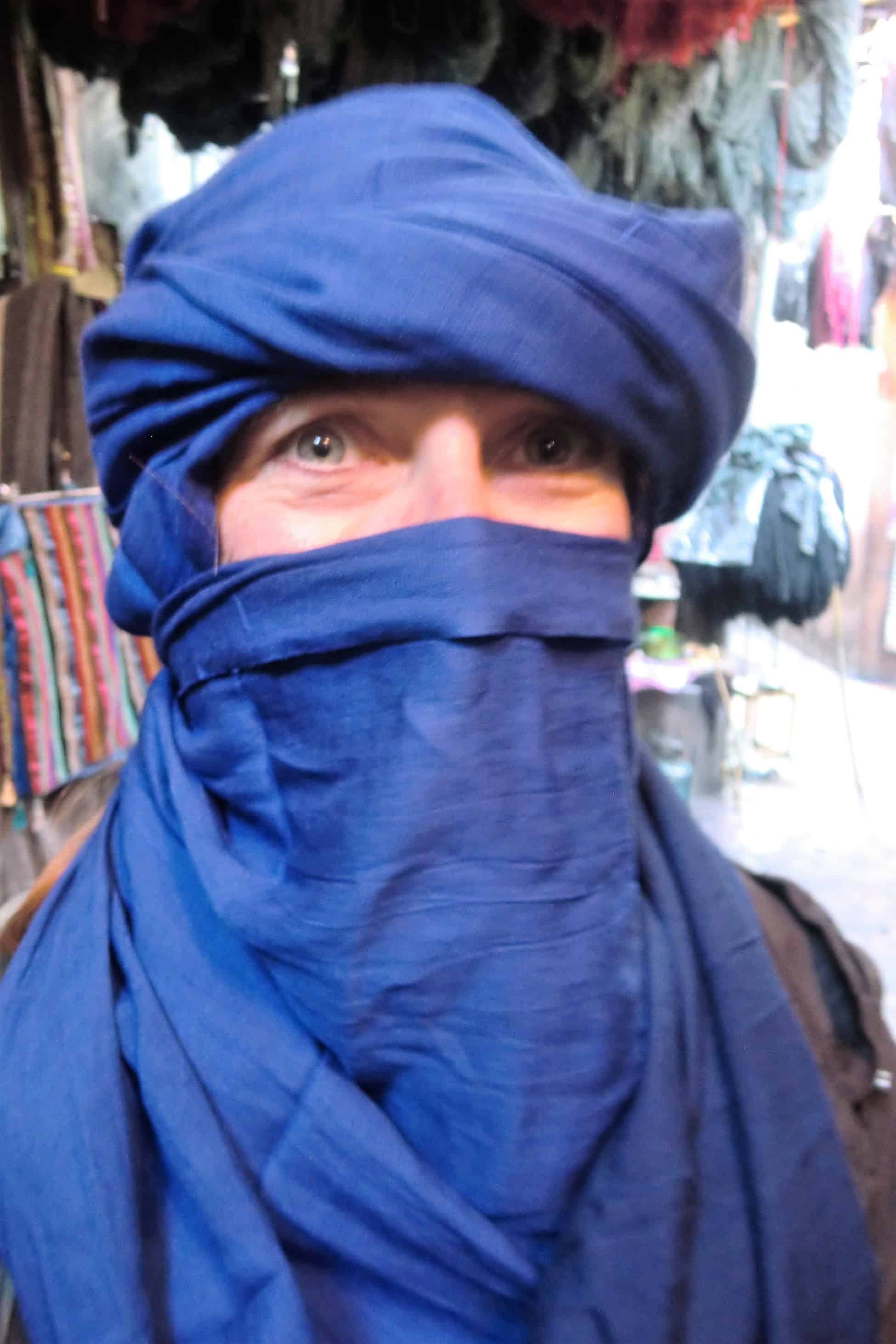
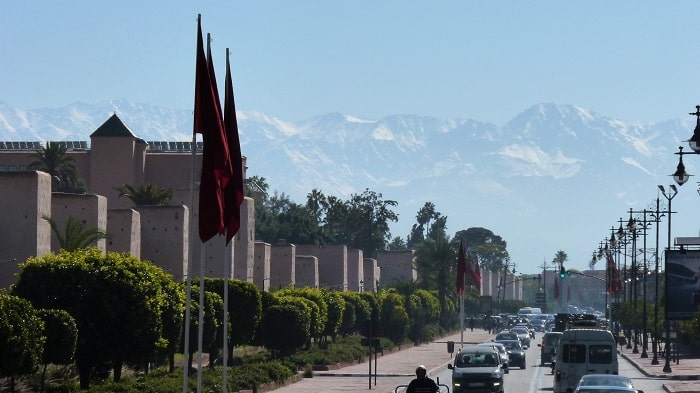
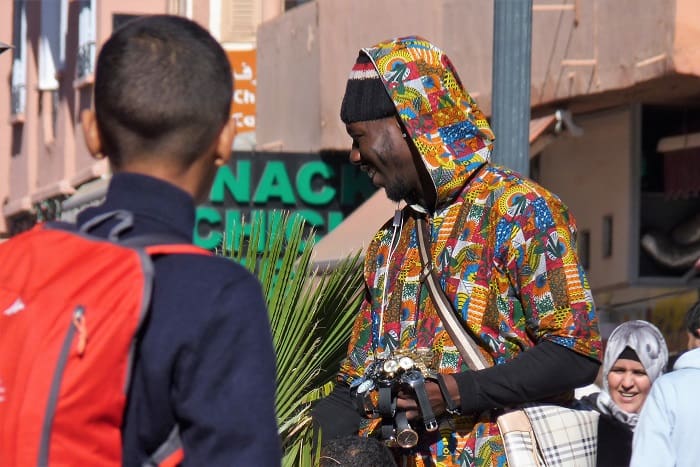
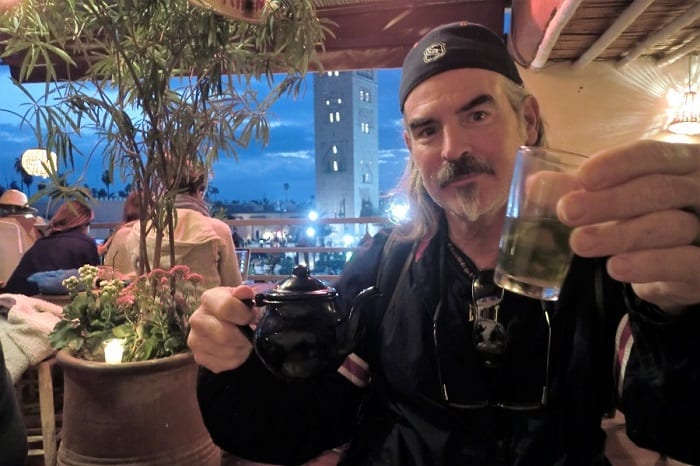
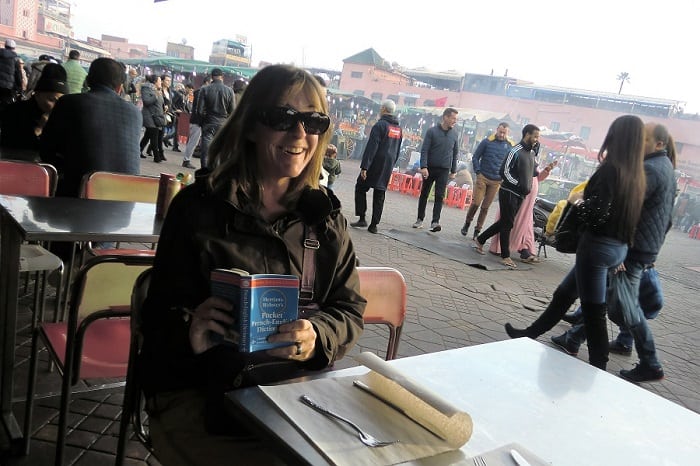
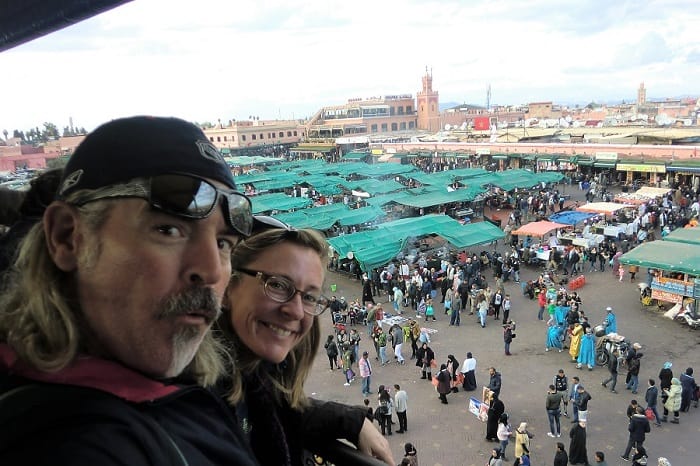
We also spent time outside of the medina. As I’ve mentioned, it’s a different world outside the walls – it’s quite Westernized for a predominantly Muslim country, and it’s a modern, hip place. You can really get a feel for the areas away from the tourist zone by taking a public bus, or the ‘hop-on, hop-off’ bus. (See links below.)
Impressed by cultural crossroad in Marrakesh
I’m impressed by Marrakesh . This city held the United Nations Climate Change Conference in 2016 (COP 22). Morocco is a forward thinking country, and it’s been leading the way for a long time. It was the first country to recognize the U.S. as an independent nation back in 1777. Isn’t that dang amazing?? It played an important role in World War II as the U.S. and the U.K. literally mapped out the way forward.
Morocco actually has a long, friendly history with the United States. The U.S. has its version of that relationship on its embassy site, which can be found here.
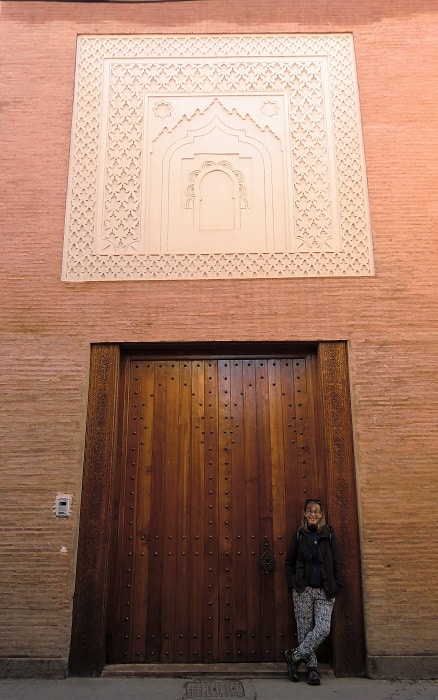
Related:
- Public bus ride into a regular Marrakesh neighborhood – outside the tourist zone
- 3 budget things to do in Marrakesh
- Travel notes on Fez

Beautiful! So glad you’re enjoying your journey!
So jealous
Plan a trip, Bob!
I like how it really showed the culture
Thanks!